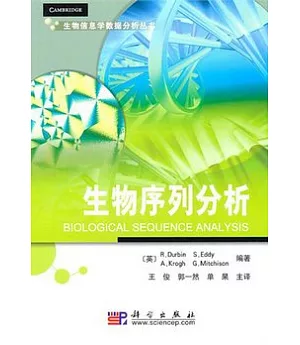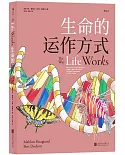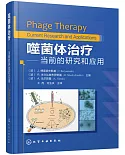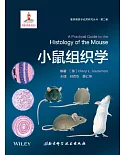本書在結構上大致可以分為四個部分,每個部分所覆蓋的問題分別是︰二序列聯配、多序列聯配、系統發育樹和RNA結構。具體分為︰二序列聯配、Markov鏈與隱馬模型、使用HMM的二序列聯配、用于序列家族的列型HMM、多序列聯配方法、構造系統發育樹和系統發育的概率論方法。本書介紹的列型�MM、多序列聯配方法、構造系統發育樹和系統發育的概率論方法。本書介紹的一些方法將不同的生物信息來源整合到一般的、清晰且可操作的序列分析概率論模型中,有助于研究者深入了解生物序列分析的基礎。
本書可供生物信息學、分子生物學、數學、計算機科學以及物理學專業的研究生或高年級本科生及這些領域的老師和研究人員參考。
目錄
譯者名單
中文版序一
中文版序二
譯者的話
前言
第1章 緒論
1.1 序列的相似性、同源性及聯配
1.2 本書概述
1.3 概率與概率論模型
1.4 補充讀物
第2章 二序列聯配
2.1 引言
2.2 計分模型
2.3 聯配算法
2.4 更復雜模型的動態規劃
2.5 啟發式聯配算法
2.6 線性空間聯配
2.7 分值的顯著性
2.8 從聯配數據推導計分參數
2.9 補充讀物
第3章 Markov鏈與隱馬模型(HMM)
3.1 Markov鏈
3.2 隱馬模型
3.3 HMM的參數估計
3.4 HMM的模型結構
3.5 更復雜的Markov鏈
3.6 HMM算法的數值穩定性
3.7 補充讀物
第4章 采用HMM的二序列聯配
4.1 索引
4.2 X和Y的對所有路徑求和的全概率
4.3 次優聯配
4.4 Xi聯配上Yi的後驗概率
4.5 用于搜索的成對HMM與FSA之對比
4.6 補充讀物
第5章 用于序列家族的列型ItMM
5.1 無空位計分矩陣
5.2 添加插入與刪除狀態以獲得列型HMM
5.3 從多序列聯配中導出列型HMM
5.4 基于列型HMM的搜索
5.5 用于非全局聯配的列型HMM變體
5.6 對概率估計的深入說明
5.7 最優模型的構建
5.8 訓練序列的加權
5.9 補充讀物
第6章 多序列聯配方法
6.1 多序列聯配的含義
6.2 為多序列聯配計分
6.3 多維動態規劃
6.4 漸進聯配方法
6.5 由列型HMM訓練的多序列聯配
6.6 補充讀物
第7章 構造系統發育樹
7.1 生命之樹
7.2 樹的背景知識
7.3 用成對距離建樹
7.4 簡約法
7.5 樹的評估︰自舉法
7.6 聯配與系統發育的同時處理
7.7 補充讀物
7.8 附錄︰鄰接法定理的證明
第8章 系統發育的概率論方法
8.1 引言
8.2 進化的概率論模型
8.3 計算無空位聯配的似然
8.4 用似然做推斷
8.5 更現實的進化模型
8.6 概率論方法與非概率論方法的比較
8.7 補充讀物
第9章 轉換文法
9.1 轉換文法
9.2 正則文法
9.3 上下文無關文法
9.4 上下文有關文法
9.5 隨機文法
9.6 用于序列建模的隨機上下文無關文法
9.7 補充讀物
第10章 RNA結構分析
10.1 RNA
10.2 RNA二級結構預測
10.3 協方差模型︰基于SCFG的RNA列型
10.4 補充讀物
第11章 概率論背景
11.1 概率分布
11.2 熵
11.3 推斷
11.4 抽樣
11.5 從計數估計概率
11.6 EM算法
參考文獻
部分術語漢英對照
部分術語英漢對照
索引
中文版序一
中文版序二
譯者的話
前言
第1章 緒論
1.1 序列的相似性、同源性及聯配
1.2 本書概述
1.3 概率與概率論模型
1.4 補充讀物
第2章 二序列聯配
2.1 引言
2.2 計分模型
2.3 聯配算法
2.4 更復雜模型的動態規劃
2.5 啟發式聯配算法
2.6 線性空間聯配
2.7 分值的顯著性
2.8 從聯配數據推導計分參數
2.9 補充讀物
第3章 Markov鏈與隱馬模型(HMM)
3.1 Markov鏈
3.2 隱馬模型
3.3 HMM的參數估計
3.4 HMM的模型結構
3.5 更復雜的Markov鏈
3.6 HMM算法的數值穩定性
3.7 補充讀物
第4章 采用HMM的二序列聯配
4.1 索引
4.2 X和Y的對所有路徑求和的全概率
4.3 次優聯配
4.4 Xi聯配上Yi的後驗概率
4.5 用于搜索的成對HMM與FSA之對比
4.6 補充讀物
第5章 用于序列家族的列型ItMM
5.1 無空位計分矩陣
5.2 添加插入與刪除狀態以獲得列型HMM
5.3 從多序列聯配中導出列型HMM
5.4 基于列型HMM的搜索
5.5 用于非全局聯配的列型HMM變體
5.6 對概率估計的深入說明
5.7 最優模型的構建
5.8 訓練序列的加權
5.9 補充讀物
第6章 多序列聯配方法
6.1 多序列聯配的含義
6.2 為多序列聯配計分
6.3 多維動態規劃
6.4 漸進聯配方法
6.5 由列型HMM訓練的多序列聯配
6.6 補充讀物
第7章 構造系統發育樹
7.1 生命之樹
7.2 樹的背景知識
7.3 用成對距離建樹
7.4 簡約法
7.5 樹的評估︰自舉法
7.6 聯配與系統發育的同時處理
7.7 補充讀物
7.8 附錄︰鄰接法定理的證明
第8章 系統發育的概率論方法
8.1 引言
8.2 進化的概率論模型
8.3 計算無空位聯配的似然
8.4 用似然做推斷
8.5 更現實的進化模型
8.6 概率論方法與非概率論方法的比較
8.7 補充讀物
第9章 轉換文法
9.1 轉換文法
9.2 正則文法
9.3 上下文無關文法
9.4 上下文有關文法
9.5 隨機文法
9.6 用于序列建模的隨機上下文無關文法
9.7 補充讀物
第10章 RNA結構分析
10.1 RNA
10.2 RNA二級結構預測
10.3 協方差模型︰基于SCFG的RNA列型
10.4 補充讀物
第11章 概率論背景
11.1 概率分布
11.2 熵
11.3 推斷
11.4 抽樣
11.5 從計數估計概率
11.6 EM算法
參考文獻
部分術語漢英對照
部分術語英漢對照
索引
序
It was a pleasant surprise to hear that Biological Se.quence. Analysis was be-ing translated into Chinese, twelve years after its first publication in 1998. Atthe time we wrote this book, SRE,
AK, GJM and I were all trying to understanclhow standard sequence alignment and analysis methods of the time worked, andto some extent we wrote the book to help us get things straight in our
ownminds. In the process we came to the conclusion that it should be possible to pro-vide a more coherent view of sequence alignment and alignment-based bioinforma-tics. At that time we had
been struck by the elegance of some new ideas in thefield, such as the application of hidden Markov models to generate protein familymultiple alignments, and stochastic context-free grammars to
reprcsent the sec-ondary structure in RNA families, and we aimed to take ideas from these meth-ods into bioinformatics more generally. With these points in mind, we started thewriting of this
book, focusing mainly on the principles of scqucnce analys ratherthan providing a common practical manual of sequence﹀ analysis tools.
The completion of the Human Genome Project was an important milcstonc inthe development of biological science. It marked the actvent of the genome era,which has changed the nature of biological research. The great dcmand for pow-erful analysis methods to interpret the sequence coming from large genome pro-jects promoted the flourishing of computational biology, bringing in many newpeople from a diverse set of backgrounds. Qur book turned out to become a use-ful introductory text for students and researchers with a mathematical or compu-tational background who were interested in the field. It is very satisfying that itstill serves this purpose well, despite being over ten years old: sound fundamen-tal concepts never go out of date.
We would like to thank Jun Wang and all the other members in the BGl﹀stranslation group for their dedicated effort to translate this book into Chinese,enabling it to be introduced to a new group of nascent bioinformaticians. In parti-cular, we wish to thank Weimou Zheng and Huimin Xie for their review of theChinese version.
The completion of the Human Genome Project was an important milcstonc inthe development of biological science. It marked the actvent of the genome era,which has changed the nature of biological research. The great dcmand for pow-erful analysis methods to interpret the sequence coming from large genome pro-jects promoted the flourishing of computational biology, bringing in many newpeople from a diverse set of backgrounds. Qur book turned out to become a use-ful introductory text for students and researchers with a mathematical or compu-tational background who were interested in the field. It is very satisfying that itstill serves this purpose well, despite being over ten years old: sound fundamen-tal concepts never go out of date.
We would like to thank Jun Wang and all the other members in the BGl﹀stranslation group for their dedicated effort to translate this book into Chinese,enabling it to be introduced to a new group of nascent bioinformaticians. In parti-cular, we wish to thank Weimou Zheng and Huimin Xie for their review of theChinese version.
網路書店
類別
折扣
價格
-
新書87折$313




























